San Antonio Economic Indicators

| San Antonio economy dashboard (April 2025) | |||
| Job growth (annualized) Jan.–April '25 |
Unemployment rate |
Avg. hourly earnings |
Avg. hourly earnings growth y/y |
| 2.5% | 3.8% | $31.53 | 8.8% |
San Antonio payrolls and wages grew in April, exceeding both the state and the nation, while the unemployment rate held steady. Sales tax revenue declined. The latest Census Bureau data showed the metro area’s population increased in 2024 at a rate below its historical average.
Business-cycle index
The San Antonio Business-Cycle Index, a gauge of economic conditions in the metro area, increased an annualized 7.2 percent in April (Chart 1).
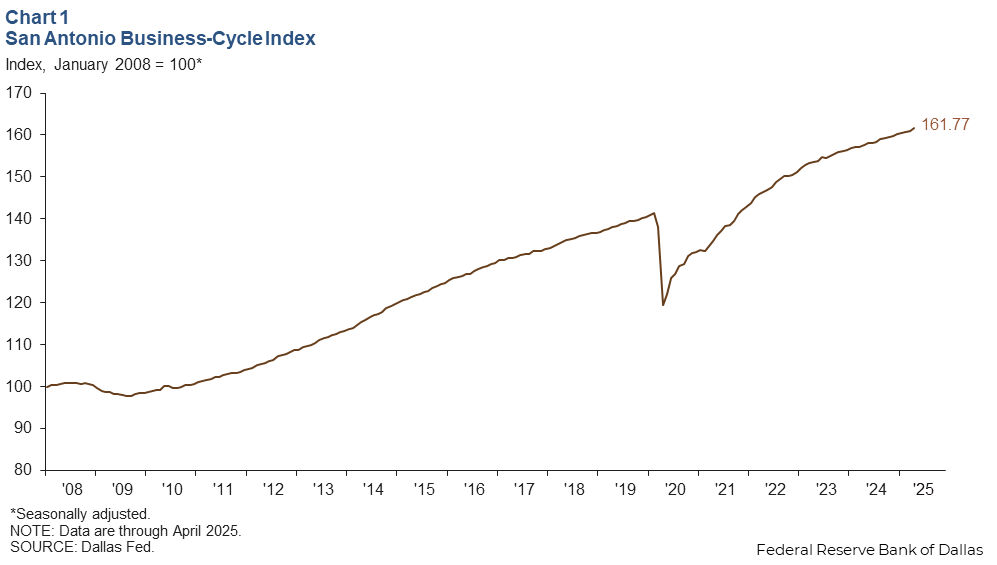
Labor market
Employment growth continues
San Antonio payrolls expanded strongly in April, growing an annualized 6.3 percent (6,100 jobs). Year to date, payrolls grew an annualized 2.2 percent (8,500 jobs), led by gains in construction (5.3 percent, or 1,200 jobs), educational and health services (4.7 percent, or 2,800 jobs) and government (3.0 percent, or 1,900 jobs) (Chart 2). Payrolls declined an annualized 4.3 percent (-270) in information while other services fell an annualized 3.8 percent (-560) from December 2024 through April 2025. Year over year, total nonfarm employment growth in San Antonio was 1.4 percent, slower than gains in Texas (1.8 percent) but faster than the U.S. (1.2 percent).
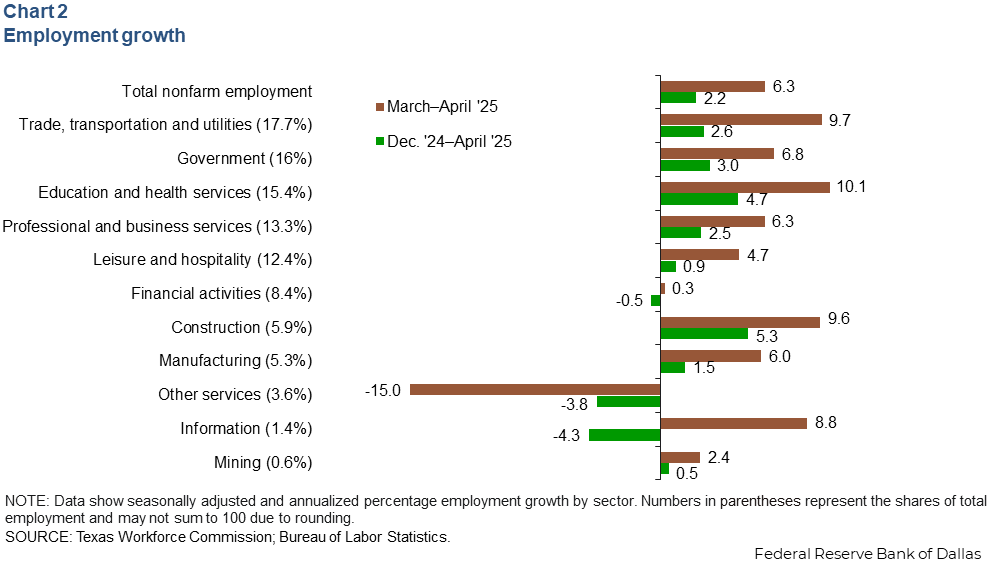
Unemployment rate ticks down
The San Antonio unemployment rate held at 3.8 percent in April 2025 unchanged from March (Chart 3). The jobless rate is higher in Texas at 4.1 percent and the U.S. at 4.2 percent. Over the past year, the jobless rate in San Antonio is little changed; in April 2024, unemployment was 3.6 percent in the metro area.
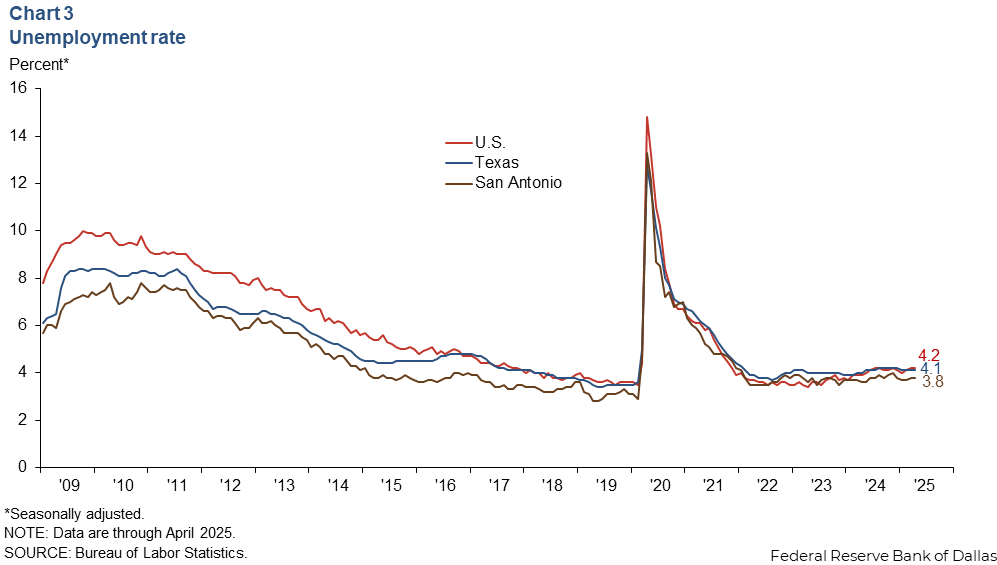
Wages rise
The average nominal hourly wage in San Antonio rose to $31.59 in April 2025 from March’s $31.41 (Chart 4). Wages are seasonally adjusted and smoothed with a three-month moving average. Year over year, wages grew 9.3 percent in April. In Texas, wages rose 5.6 percent from April 2024 to April 2025, and they increased 3.8 percent in the nation over the same time. Earnings in San Antonio tend to be lower than both the state ($34.38) and nation ($35.99).
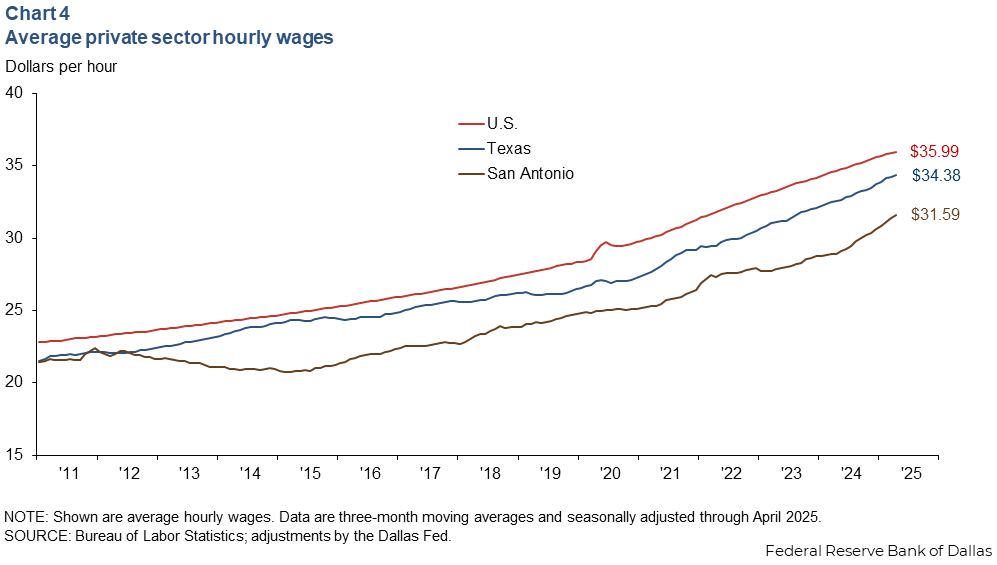
Consumer spending
Sales tax receipts are a proxy for consumer spending patterns. San Antonio sales tax revenue, adjusted for inflation, declined 1.1 percent in April 2025 from April 2024, and Texas sales tax revenue increased 4.6 percent (Chart 5) over the same time.
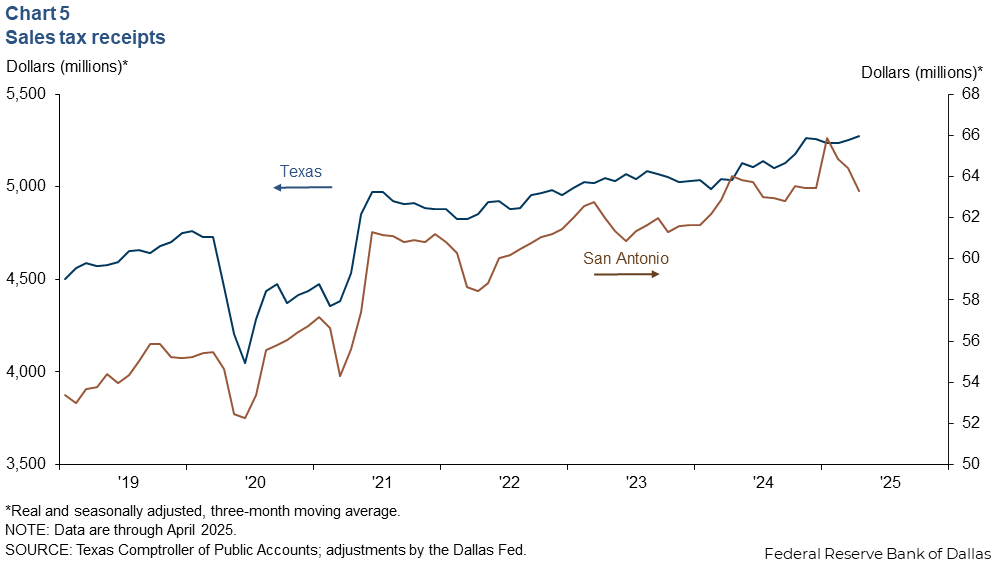
Population increases
San Antonio’s resident population rose 1.7 percent year over year in 2024, below its historical averag e of 2.0 percent growth. San Antonio’s population growth also dipped below Texas’ growth (1.8 percent) for the first time since the early 2000s (Chart 6). According to the Census Bureau, the city of San Antonio added 24,000 people between July 2023 and July 2024, making the Alamo City fourth in the nation in the number of new residents. Domestic migration to the metro area slowed, while international migration increased.
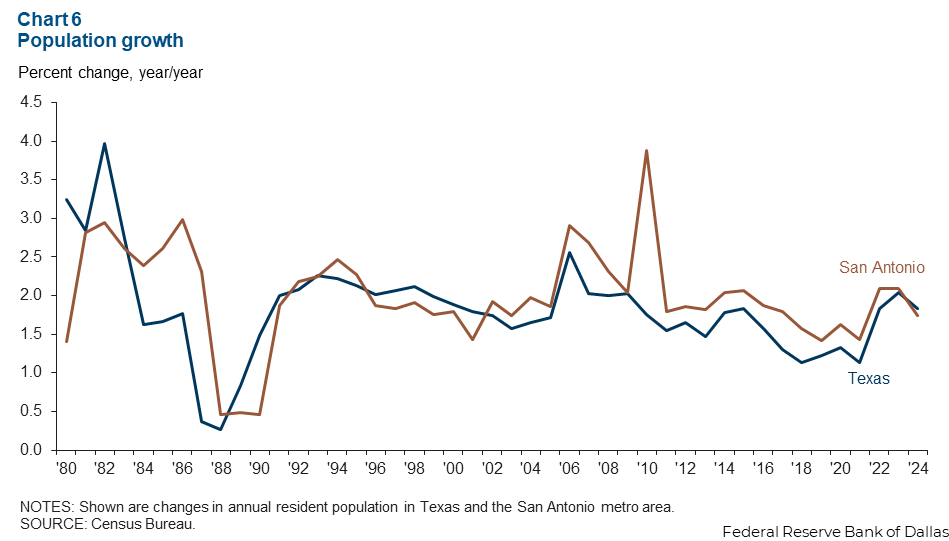
NOTE: Data may not match previously published numbers due to revisions.
About San Antonio Economic Indicators
Questions or suggestions can be addressed to Ethan Dixon at Ethan.Dixon@dal.frb.org. San Antonio Economic Indicators is published every month during the week after state and metro employment data are released.